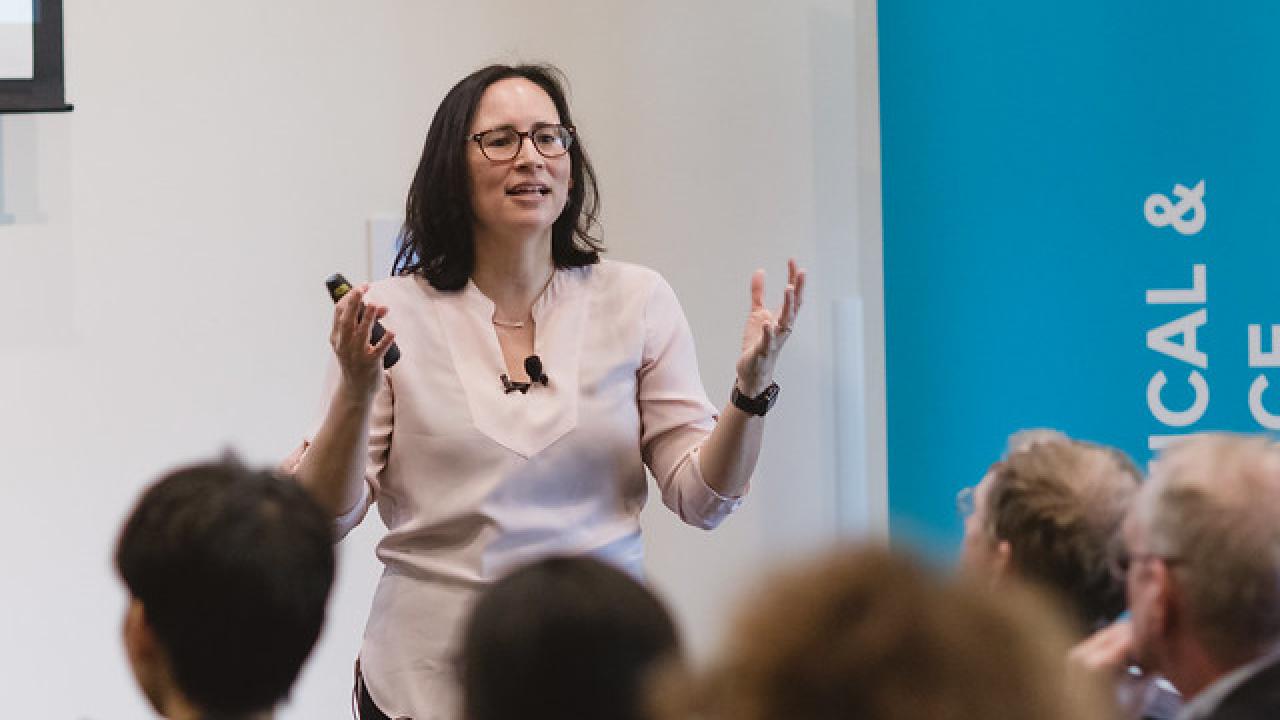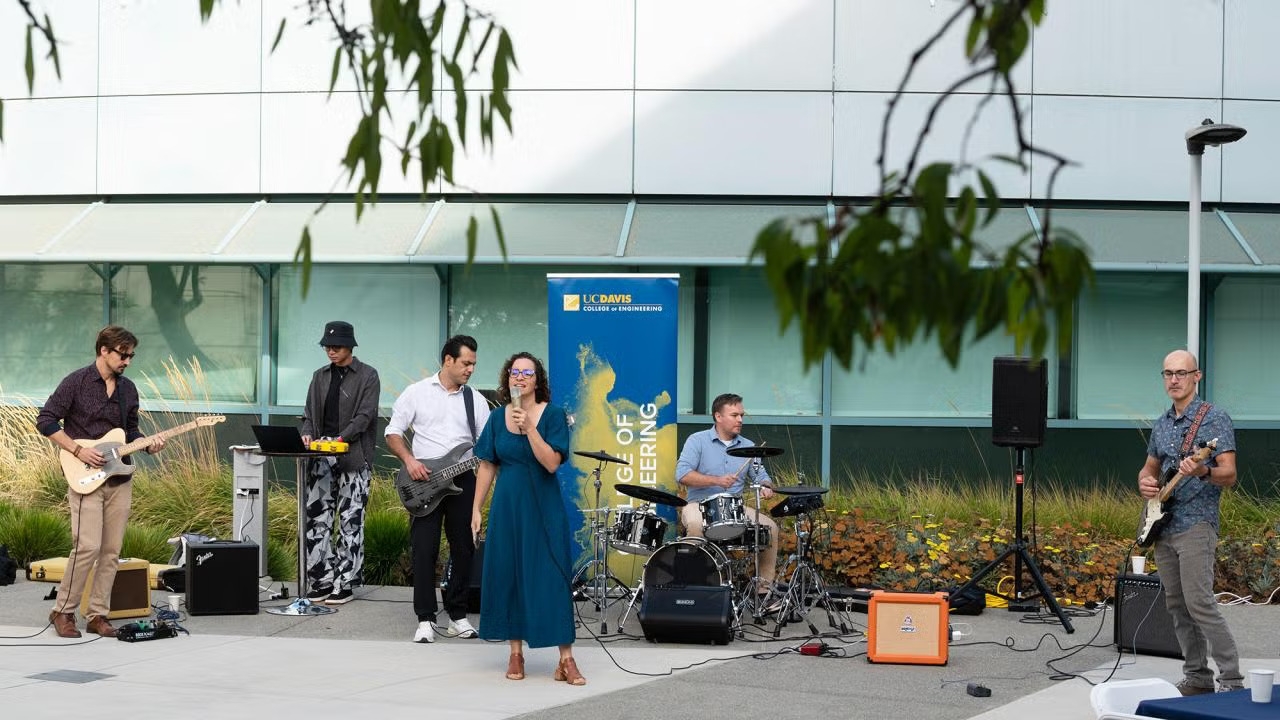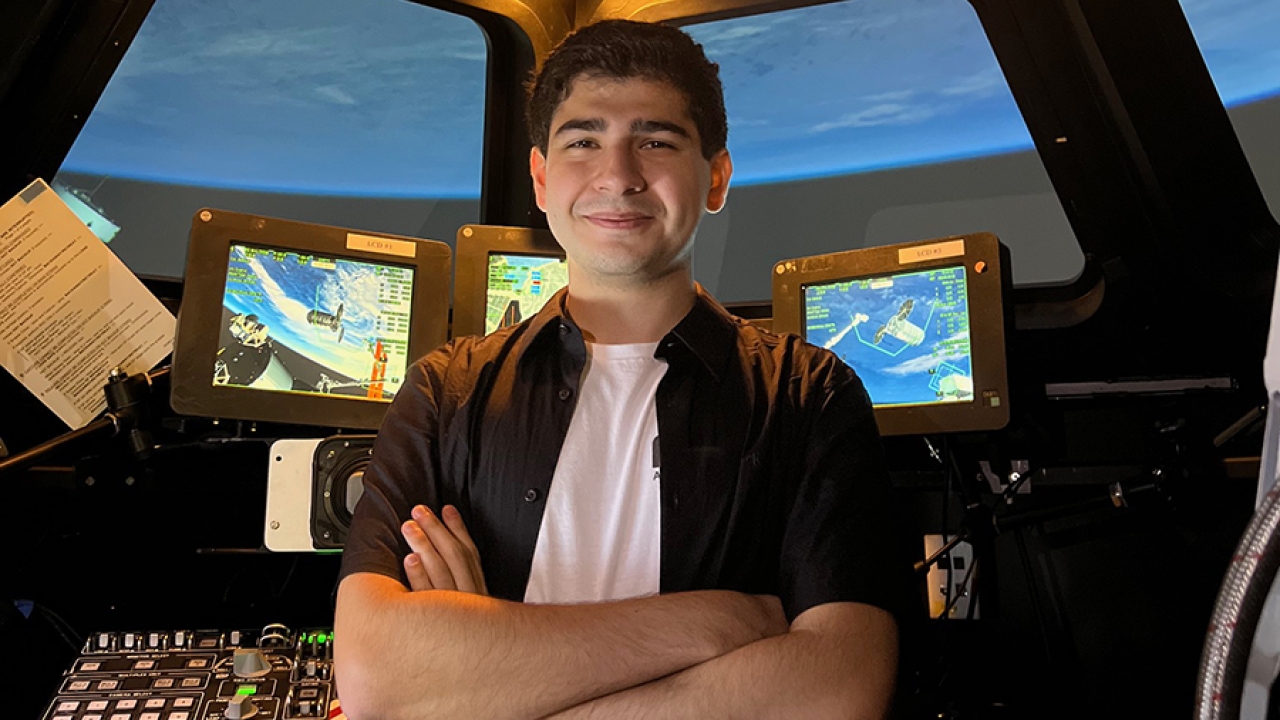
Spring Distinguished Lecture: Soft Haptics and Soft Robotics
Stanford University’s Dr. Allison Okamura, this quarter’s College of Engineering Distinguished Lecture speaker, shared what she and her students have discovered through their research on soft haptics and robotics. Okamura’s presentation was delivered in the Student Community Center on April 15, 2019 to a full room of students, staff, and faculty.
Okamura presented projects that featured haptic devices for medical simulation, flexible patient-specific medical robots and biologically-inspired robot growth.
While traditional robotic manipulators are constructed from rigid links and localized joints, she described a new generation of robotic devices – systems that are soft and use flexible, deformable materials to achieve shape control, provide an interface to the human body and access hard-to-reach locations.
“Biological inspiration is really useful in soft robotics,” said Okamura. “The reason why people in robotics are thinking about making soft devices is because biological systems are soft, ranging from plants to animals. The other thing that drives a lot of the work we do is medical application.”
Okamura and her students explored different ways to use haptic devices to improve medical simulation through a variety of virtual surfaces that replicate the patient.
“It’s great when you have virtual environments that combine haptics and graphics and sometimes even sound because all of those put together create the most compelling experience,” said Okamura.
Their goal was to improve medical simulation so that doctors can practice on properties that easily change shape and size to replicate any part of the patient’s body, while receiving haptic feedback through a practical device.
Another project featured flexible patient-specific medical robots. Okamura explained that while designing this robot they used the da Vinci Surgical System as a template, but modified the tool in order to adapt to the patient’s needs. For instance, the tool for a pediatric patient needs to be much smaller than one for an obese, adult patient.
To address this need, Okamura and her students created small concentric tube robots, which are a series of hollow pre-curved tubes that fit inside each other. The insertion and rotation of the flexible tool determines how it will bend in the free space and an actuation system is required to move the concentric tube. This robot involves a patient-specific design process to find the best shaped tool for the patient and surgeon who design the shape of the surgical instrument in a virtual environment, to discover how to reach their target in the most minimally invasive way possible.
Lastly, Okamura talked about biologically inspired robot growth. This robot is a long, vine-like device that can grow in-between cracks, holes and other small places. It works autonomously by feeding new material through its tip which then everts and allows growth – similar to plant growth. These robots are flexible, but not stretchable, and can climb with very little power. It navigates with a camera and uses sensor feedback to move and reach different targets. The purpose of this robot includes scenarios that challenge someone’s ability to safely access and create a useful structure in hard-to-reach locations.
“Medical application in robotics is a particularly compelling field to me in part because we sometimes have a reputation of playing with toys and making cool things,” said Okamura. “But, we are doing useful things in the world and in medicine you’re really held to a high standard. You’re held to having a critical impact on patient care and human health and that really drives us to think critically about the type of work that we do.”
Video of Dr. Okamura’s Distinguished Lecture is available online.




